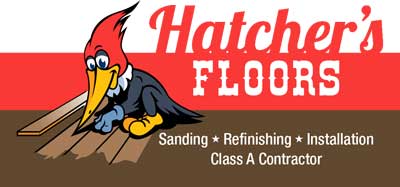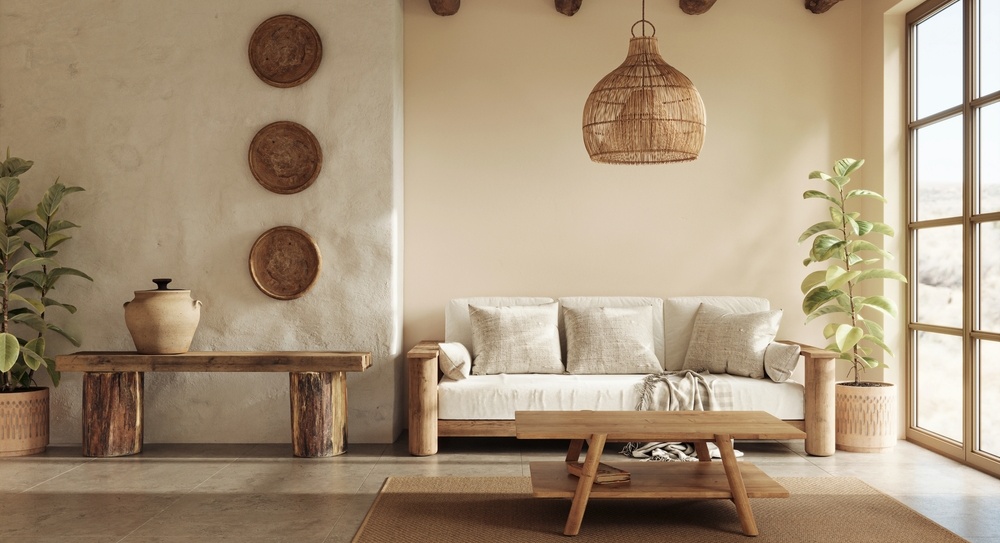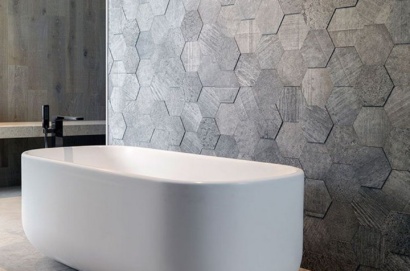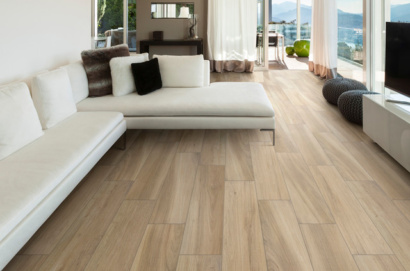As environmental awareness continues to grow, so does the demand for sustainable products across all industries, and flooring is no exception. Homeowners and businesses increasingly seek eco-friendly flooring options with style, durability, and minimal environmental impact. Sustainable flooring options help reduce your carbon footprint and contribute to healthier indoor air quality, better energy efficiency, and long-lasting beauty in your home.
In this post, we’ll examine some of the top sustainable flooring materials expected to be in demand in 2025, including reclaimed wood, bamboo, and cork. Each option offers unique benefits and environmental advantages, making it easier than ever to make sustainable choices without compromising aesthetics or performance. It’s also worth noting that while some sustainable flooring options may have a higher initial cost, they often prove to be more cost-effective in the long run due to their durability and low maintenance requirements.
Reclaimed Wood: Timeless Beauty with a Sustainable Twist
Reclaimed wood, with its unique and visually appealing characteristics, stands out as one of the most popular sustainable flooring options. This material, sourced from old barns, factories, warehouses, and even homes undergoing renovation or demolition, is a testament to the beauty of sustainability. Instead of allowing this wood to end up in a landfill, it’s carefully selected, treated, and repurposed into beautiful, high-quality flooring, each piece telling its own story.
Environmental Benefits of Reclaimed Wood
Reclaimed wood is inherently sustainable because it doesn’t require new trees to be cut down. Using existing wood directly reduces the demand for freshly harvested timber, positively impacting deforestation and habitat loss. Moreover, reclaimed wood flooring often has a lower carbon footprint than new wood, typically requiring less processing.
Additionally, reclaimed wood often has a unique, weathered appearance with natural patinas and character marks, adding a touch of history and charm to any space. This can give homes or businesses a one-of-a-kind look.
Practical Benefits of Reclaimed Wood
Aside from its environmental benefits, reclaimed wood is a symbol of durability. Older wood tends to be denser and more complex than trees that grow slowly and naturally. This makes reclaimed wood resistant to wear and tear, ensuring a long-lasting floor that will stand the test of time. Choosing reclaimed wood is not just an eco-friendly decision, but also a practical one, providing you with a reliable and enduring flooring solution.
If you’re considering reclaimed wood, sourcing high-quality materials is essential. Look for companies specializing in responsible wood reclamation, ensuring it has been adequately treated for pests, moisture, and other potential issues.
Bamboo: Rapidly Renewable and Resilient
Bamboo has earned a reputation as a sustainable flooring superstar, and for good reason. Although it looks and performs similarly to hardwood, bamboo is a type of grass that grows remarkably fast, making it one of the most renewable resources available.
Environmental Benefits of Bamboo
One of the primary reasons bamboo is considered sustainable is its rapid growth rate. Bamboo can reach maturity in as little as five to seven years, unlike hardwood trees, which can take decades. Because it regenerates quickly, bamboo has a much lower environmental impact than traditional timber.
Bamboo is also highly efficient at absorbing carbon dioxide and releasing oxygen, contributing to cleaner air and a healthier planet. Additionally, manufacturing bamboo flooring uses fewer chemicals and resources than traditional wood, reducing its environmental footprint.
Practical Benefits of Bamboo Flooring
Bamboo is known for its durability, which makes it an excellent choice for high-traffic areas in the home. Strand-woven bamboo, in particular, is highly dense and complex, making it more resistant to scratches and dents than many traditional hardwoods. Bamboo is also naturally moisture-resistant, which can be advantageous in humid climates like Virginia’s.
To ensure you choose the most sustainable bamboo, look for certified options, such as FSC (Forest Stewardship Council) certified bamboo. This ensures the material is sourced responsibly and meets rigorous environmental standards.
Cork: Comfortable, Renewable, and Highly Functional
Cork flooring is another excellent sustainable choice, known for its unique look, comfortable feel, and impressive environmental benefits. Cork is harvested from the bark of cork oak trees, primarily found in the Mediterranean region. The process of harvesting cork is unique in that it doesn’t harm the trees; only the outer bark is removed. The bark then regenerates, allowing the cork to be harvested every nine to ten years, making it a truly renewable resource.
Environmental Benefits of Cork
Cork is an incredibly sustainable material because it’s renewable and biodegradable. Cork oak trees play an essential role in maintaining biodiversity. Because they are not cut down to harvest cork, they continue to absorb carbon dioxide and release oxygen throughout their long lifespan. Additionally, cork production generates minimal waste, as most by-products can be recycled into other products.
Practical Benefits of Cork Flooring
Cork is unique in its soft and comfortable underfoot, making it an excellent choice for kitchens and living areas where people often stand. It’s also naturally antimicrobial and hypoallergenic, making it an excellent choice for households with allergies or sensitivities.
Cork also has excellent sound-absorbing qualities, which makes it an appealing option for spaces where noise reduction is a priority. Cork flooring is naturally resistant to moisture, mold, and pests, making it a durable choice for various environments.
However, cork does require some care to maintain its appearance. It can be sensitive to direct sunlight, so it should be used in areas with minimal exposure to prevent fading.
Other Sustainable Flooring Practices to Consider
Beyond choosing eco-friendly materials, there are additional practices you can implement further to reduce the environmental impact of your flooring choices.
- Low-VOC Finishes: Look for flooring with low or no VOC (volatile organic compounds) finishes. VOCs can contribute to indoor air pollution, impacting air quality and overall health. Many eco-friendly flooring options now come with low-VOC sealants and finishes to ensure a safer environment.
- Underlayment Materials: Sustainable underlayment materials, like recycled felt or cork, can provide insulation, reduce noise, and increase comfort while keeping your eco-friendly flooring commitment intact.
- Energy-Efficient Installation: Choosing professional installers who use energy-efficient tools and techniques can also help reduce the overall carbon footprint of your flooring project.
Choosing Sustainable Flooring for Your Home in Virginia
Each flooring option offers unique benefits, so the best choice depends on your style, practical needs, and environmental priorities. Virginia homeowners may want to consider the specific conditions in their area—such as humidity levels, traffic demands, and light exposure—when deciding on the most suitable eco-friendly material.
By choosing sustainable flooring options like reclaimed wood, bamboo, and cork, you’re investing in a high-quality floor and contributing to a healthier planet. These materials offer the perfect balance of beauty, functionality, and environmental responsibility, ensuring your flooring choice will stand the test of time stylistically and sustainably.
Whether renovating a single room or designing a new build, there’s never been a better time to explore eco-friendly flooring options that align with your values and design goals.





